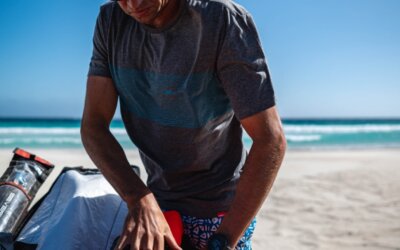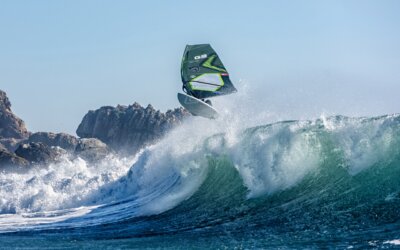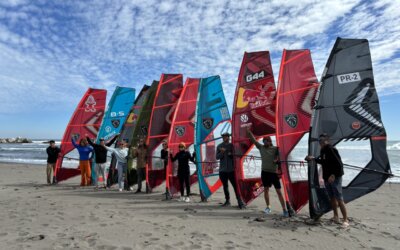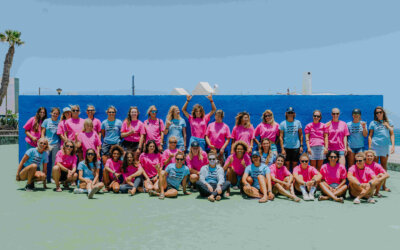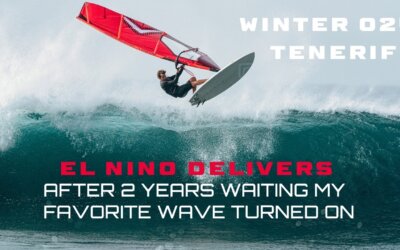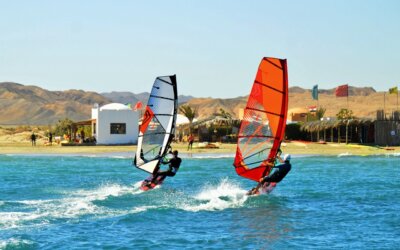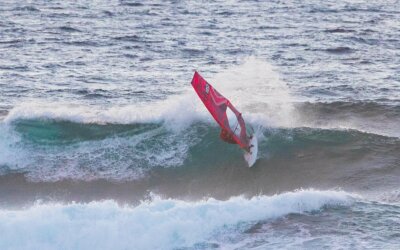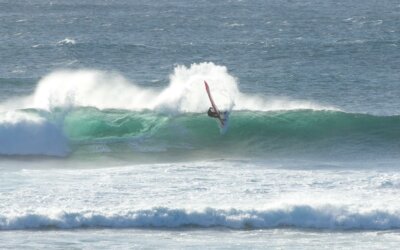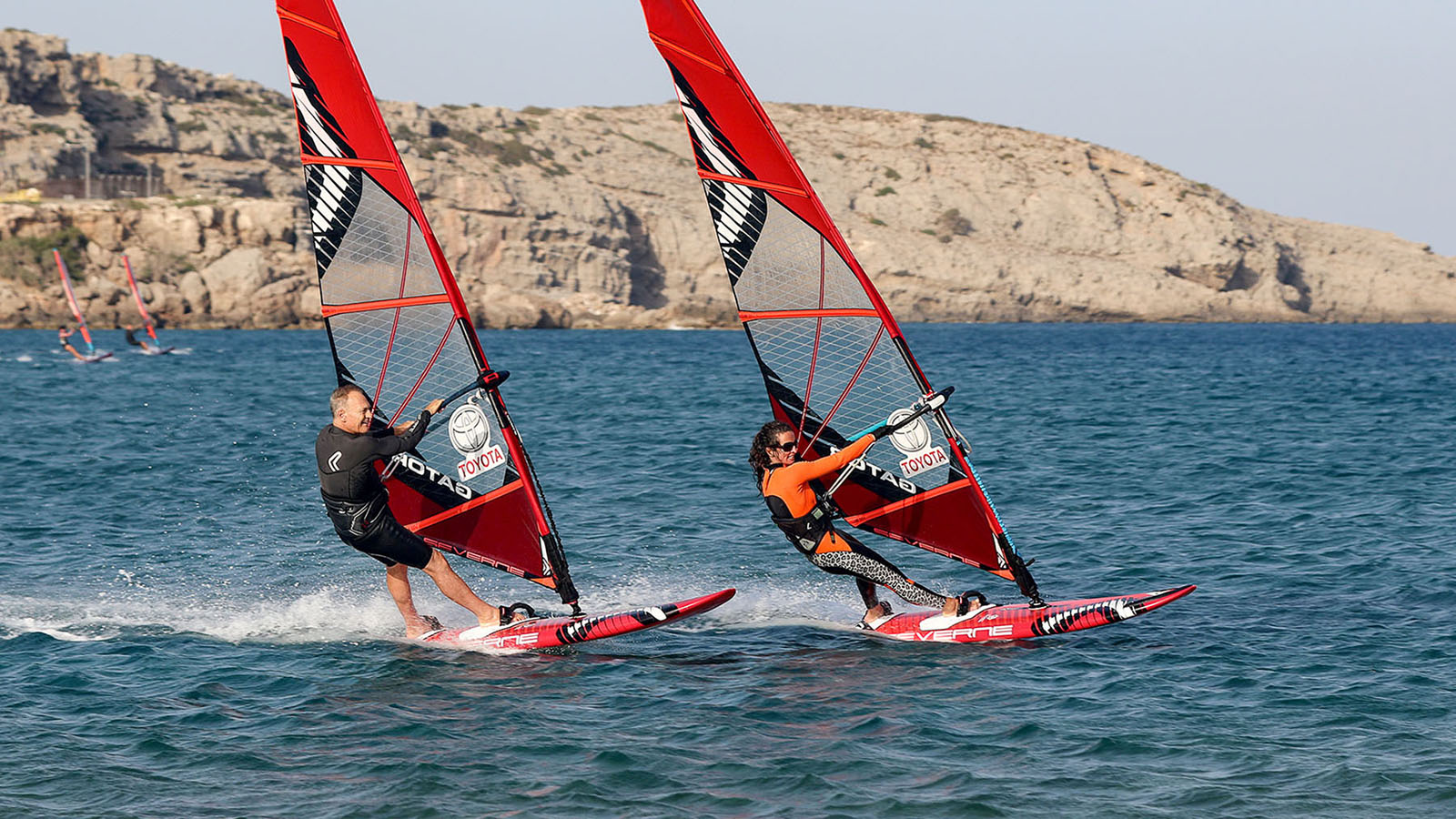
How to sail smaller boards
Whether you’re moving into planing conditions for the first time or moving down in board volume, Simon Bornhoft offers some wise words on how to make smaller beautiful.
Who’s it for?
- Are you an improver-intermediate sailor looking to move onto planing shorter boards?
- Are you an intermediate/advanced sailor progressing on Freewave kit?
- Are you having difficulty gaining confidence on smaller kit?
Then this is for you….
The Dyno Range
The super versatile Severne Dyno comes in 85-95-105-115-125L sizes. I often use them to help coach clients to improve their level because they are so user friendly and whether you own a Dyno, or you are yet to try one, this guide is designed to help you to master ‘shorter boards’.
Dyno Set Up Preferences
Single Fin & Outboard Straps: Flat water blasting, Freeride speed and quality control.
Thrusters & Inboard Straps: Easy getting going, extra maneouvrability, jumping and waves.
On a recent coaching session, we helped someone shift from a 140L board down to a 95L Dyno in a matter of hours! Whilst it’s not for everyone or for all conditions, going ‘shorter’ can open up so many more possibilities and often only comes down to some small adjustments in your technique. To help you cope with a reduction in board length and volume, here are the key issues you might experience and how to overcome them.
Common Issues Going Short & Smaller
- Difficulty uphauling
- Harder staying upwind on and off the plane
- Luffing into wind
- Struggling to early plane
- Getting that sinking feeling
- Control in the straps on and off the plane
Here’s what to do about it……
Learn To Uphaul Windwise ‘Warrior’ Style!
In full planing conditions you’ll be water starting, but if the wind drops you can learn to uphaul just about any volume of board, even if it sinks under you.
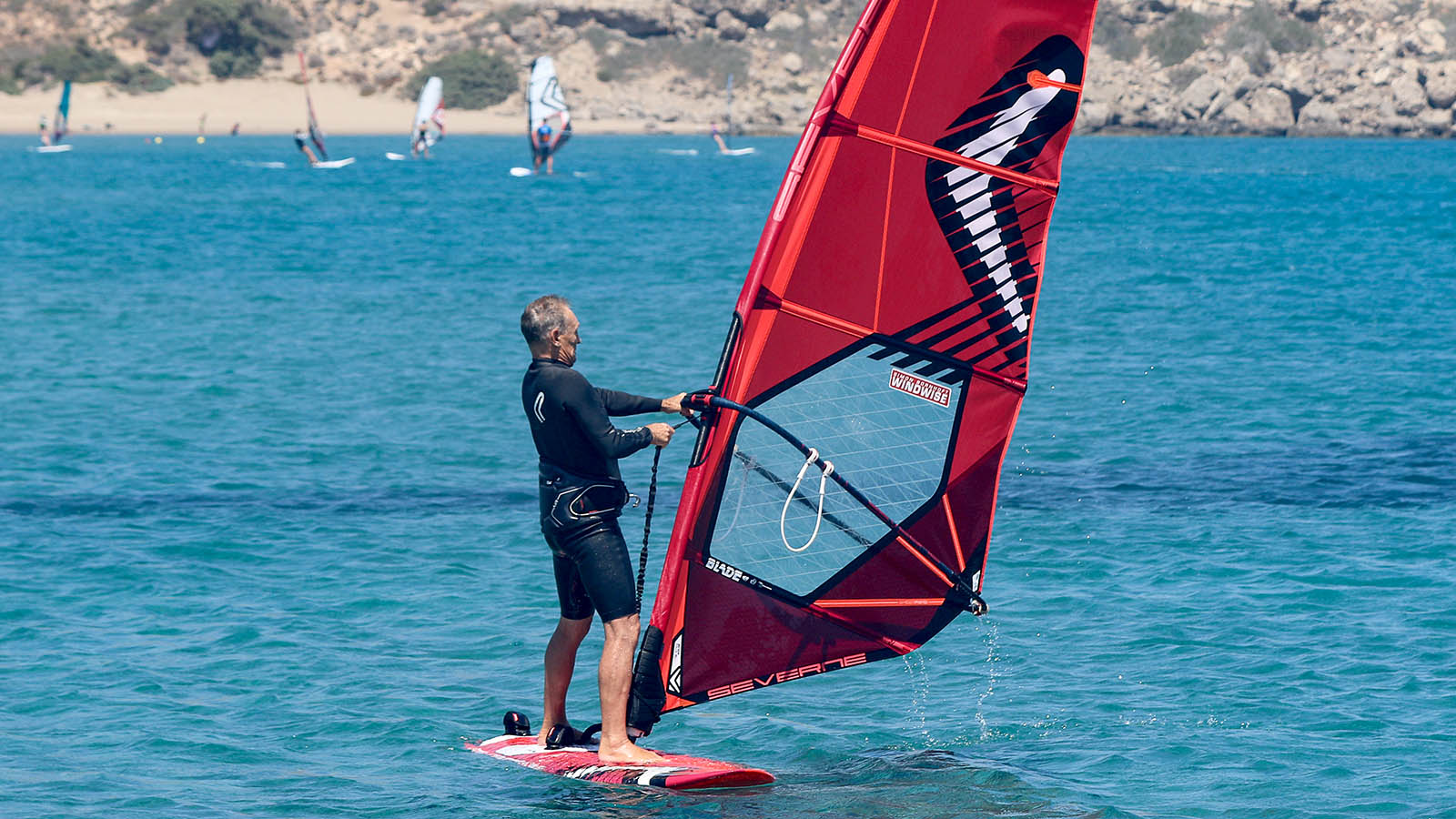
The Insecure Position Across the Wind
On short boards a ‘conventional uphaul’ just doesn’t work. Standing with your feet across the board near the mast base, elevating the rig out of the water at ‘90 degrees’ to the wind is virtually impossible on rougher water and smaller boards. (We NEVER teach this method!)
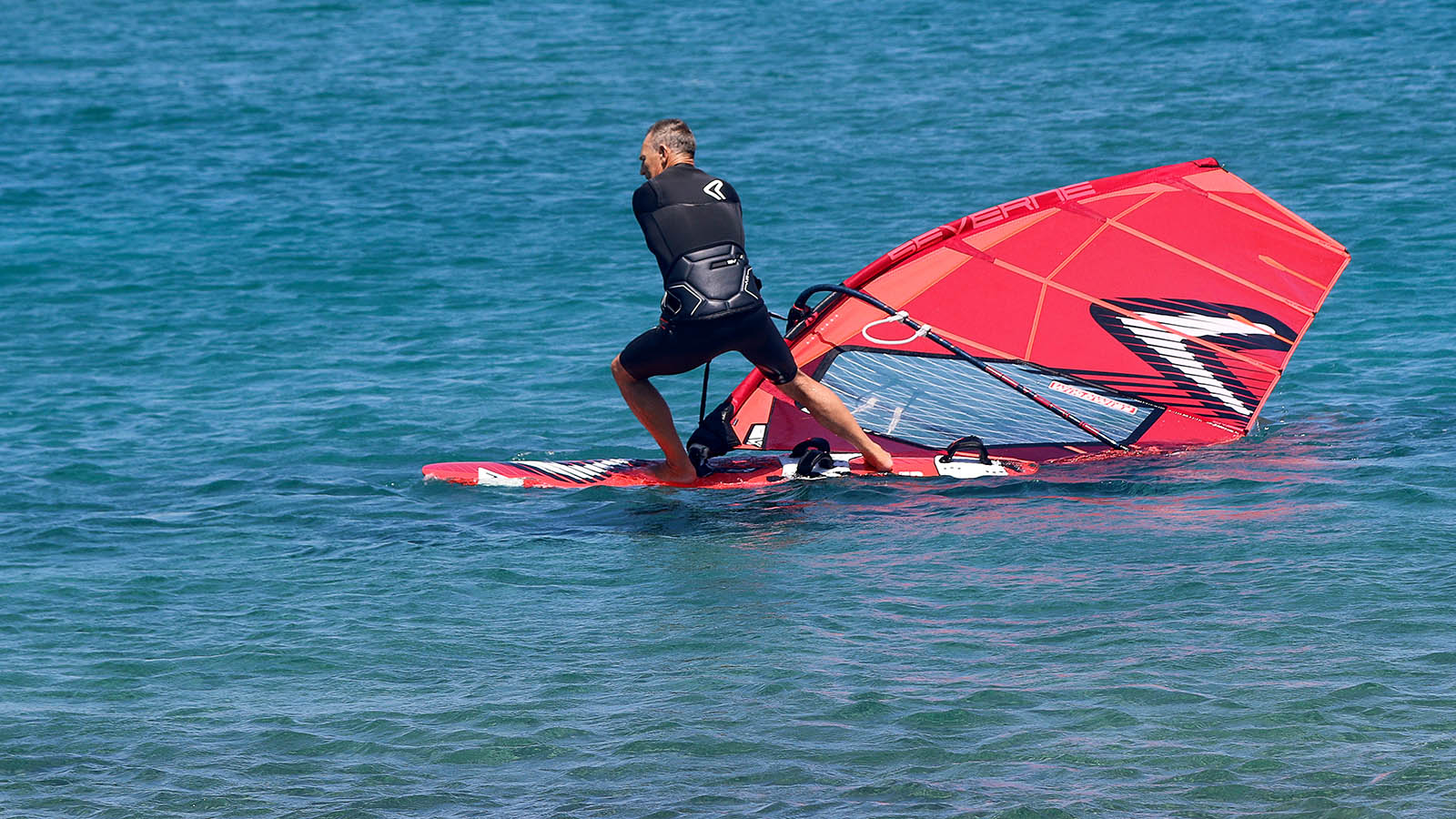
Warrior Uphaul Upwind
Before attempting to release the sail from the water, turn the board virtually into the wind onto a ‘ very close reach’ – NOT across the wind. Aligning the board into wind ensures that the rig comes out of the water from the back to the front of the board, which helps to sheet the rig in more easily and avoid knocking yourself off. Adopt a Windwise ‘Warrior’ wide foot spread stance – ‘looking and leaning’ over a heavily flexed front knee with your chin on your forward shoulder to avoid looking at your hands when you grab the boom.
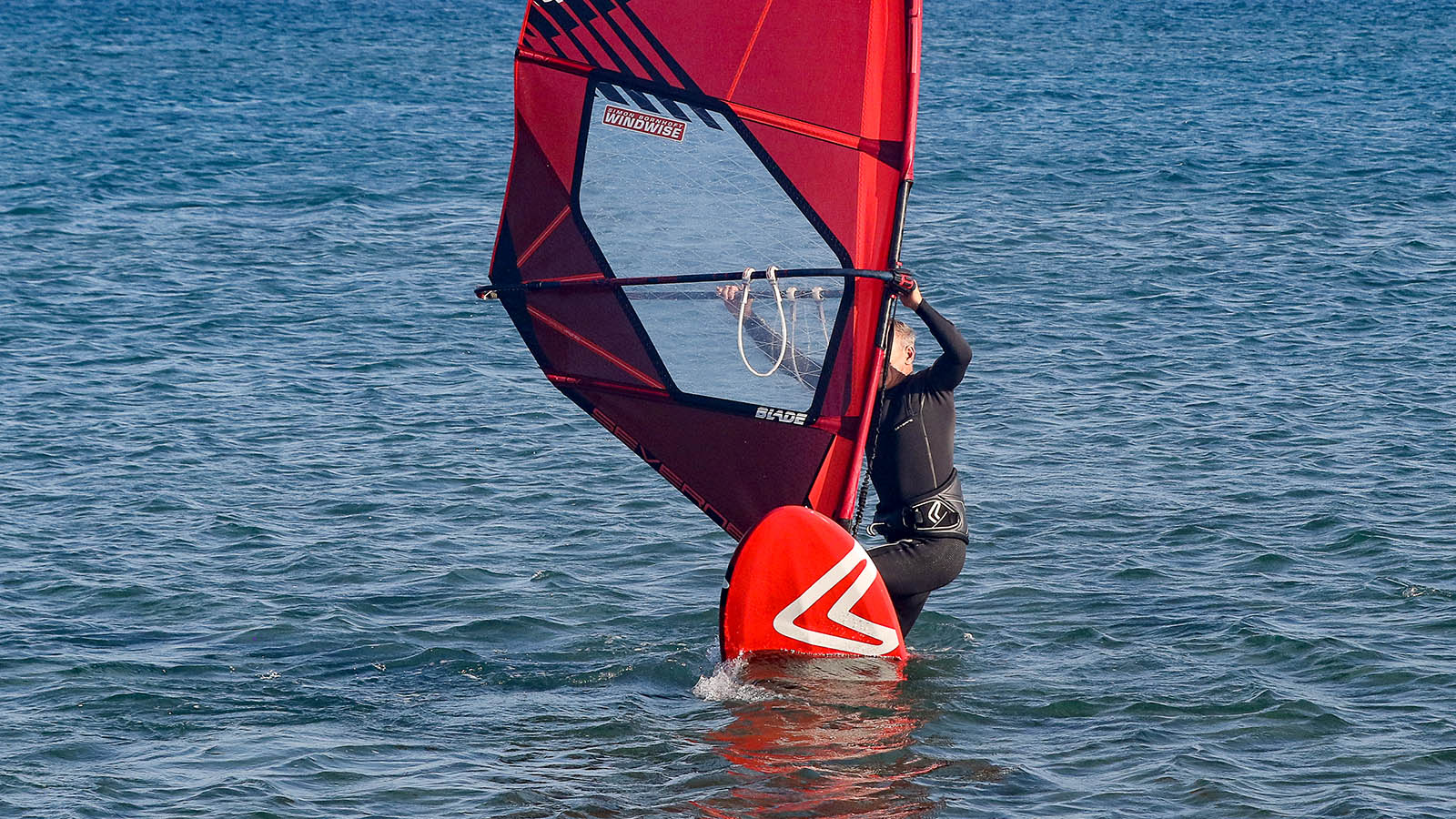
How much volume do you need to uphaul a small board?
To help you choose a Dyno with enough volume to uphaul you can use this guide.
These are the volumes that you’ll realistically be able to uphaul, ‘IF’ you practice it.
So choose safe shallow water and work on that Warrior uphaul.
Volume Wise
Take your body weight, convert it into Litres, e.g. 80Kg becomes 80L’s, then add volume depending on your level of experience.
Improver-Intermediates: Body weight (in Litres) plus 40-50L. E.g. 80Kg sailor = 120-130L board
Advanced Intermediates: Body weight (in Litres) plus 10-20L. E.g. 80Kg sailor 90-100L board
Advanced-Expert: Body weight (in Litres) plus 0-10L E.g. 80Kg sailor 80-90L board
If the water state is rough or you’re counter balance isn’t great, add an extra 5-15L.
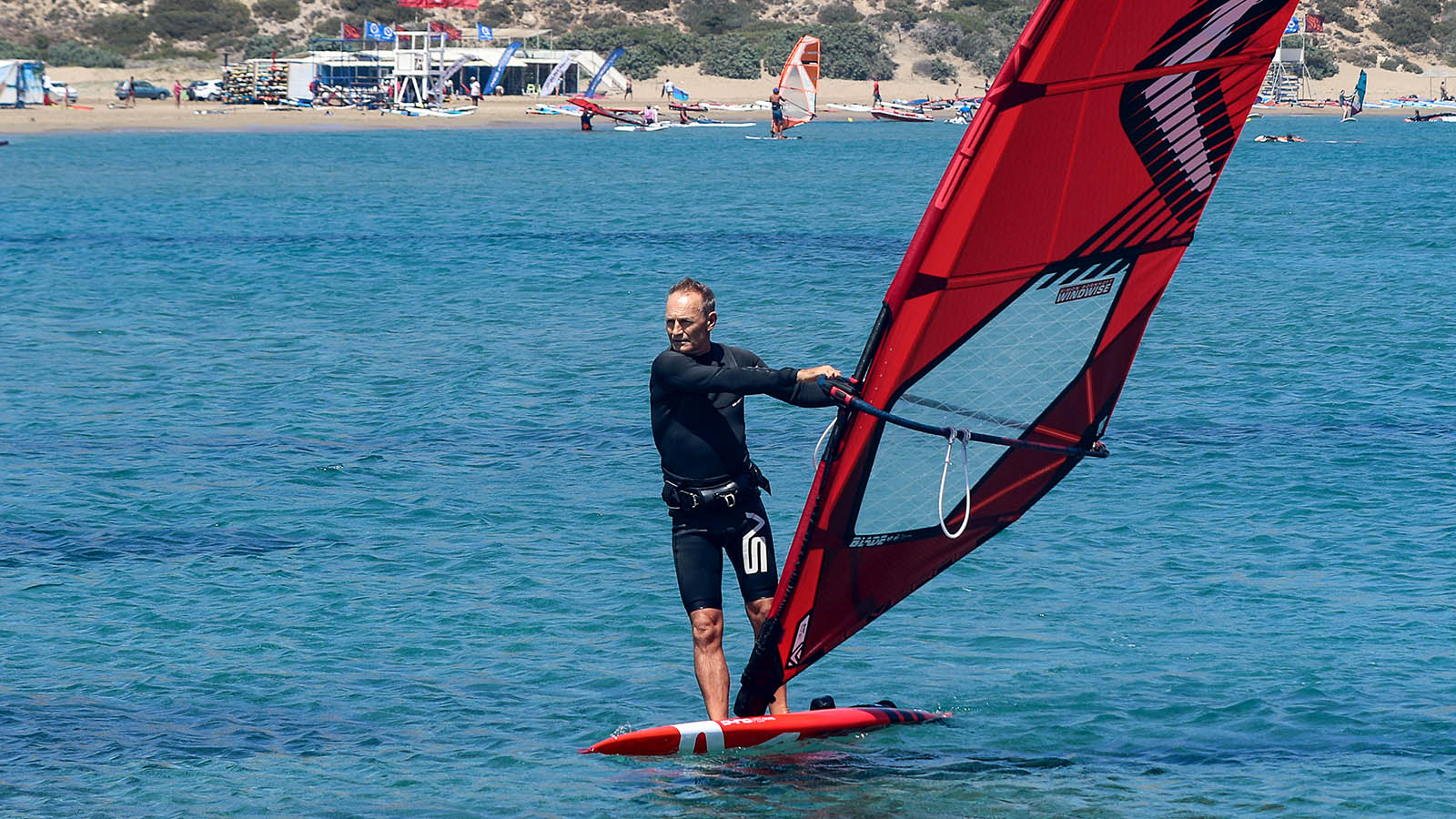
How Do You Sail Upwind Off The Plane?
One of the biggest concerns moving to a smaller board is still being able to head upwind and avoid the ‘walk of shame’.
Vision: Look upwind, chin on shoulder (incredibly important!)
Trim: Bring the feet forward and outboard to fully depress the windward rail to provide grip.
Opposition: Keep the rig away from you with that extended front arm.
Stance: Straighten the body into the shape of a ‘7’ and turn the head and shoulders upwind.
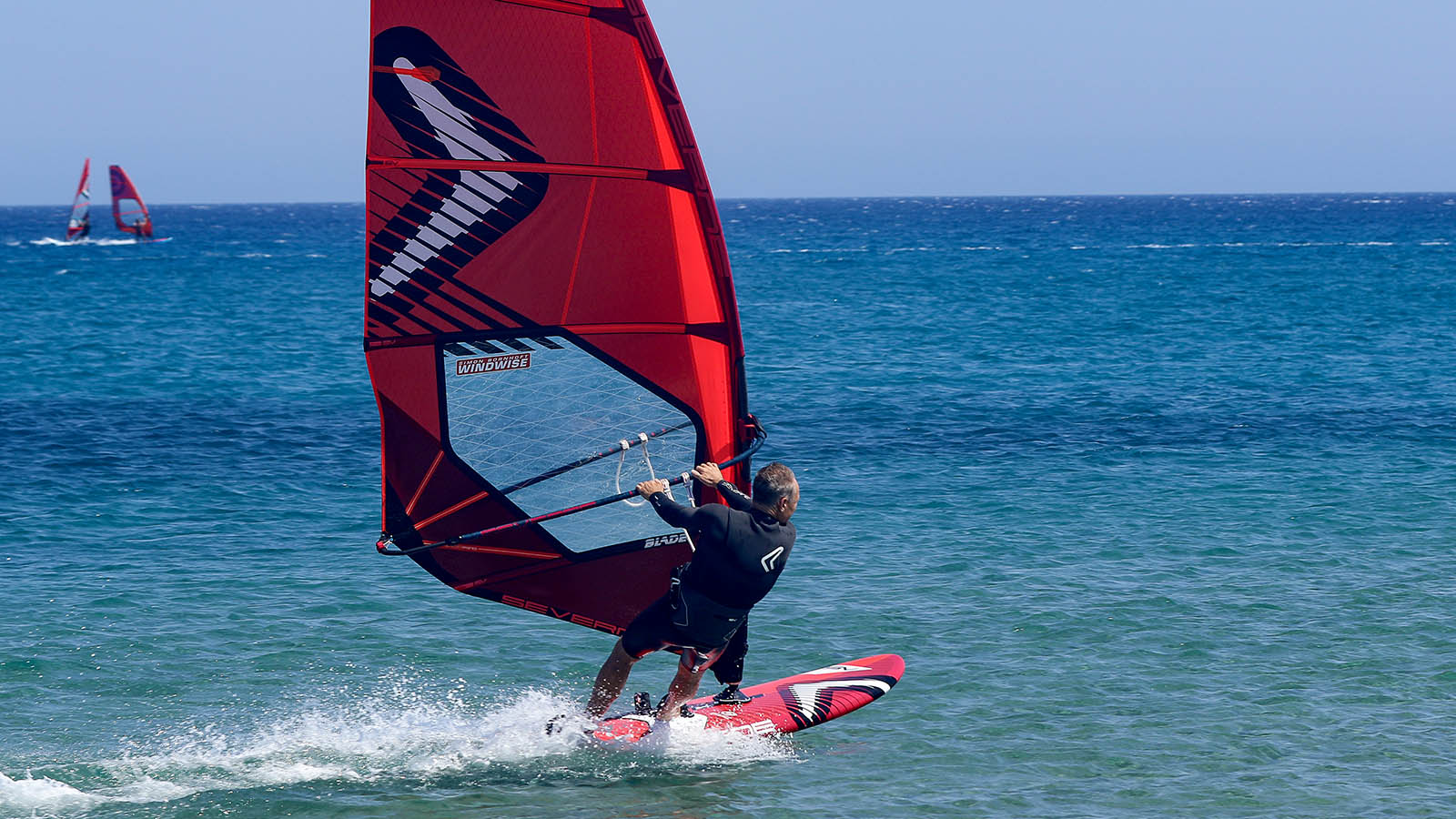
Upwind Planing
When you’re planing on a low volume board, potentially with a smaller fin, keep that windward rail down with loads of front foot heel pressure, adopt a very light narrow hand spread and accentuate looking and leaning the body forward and upwind as you rake the rig back.
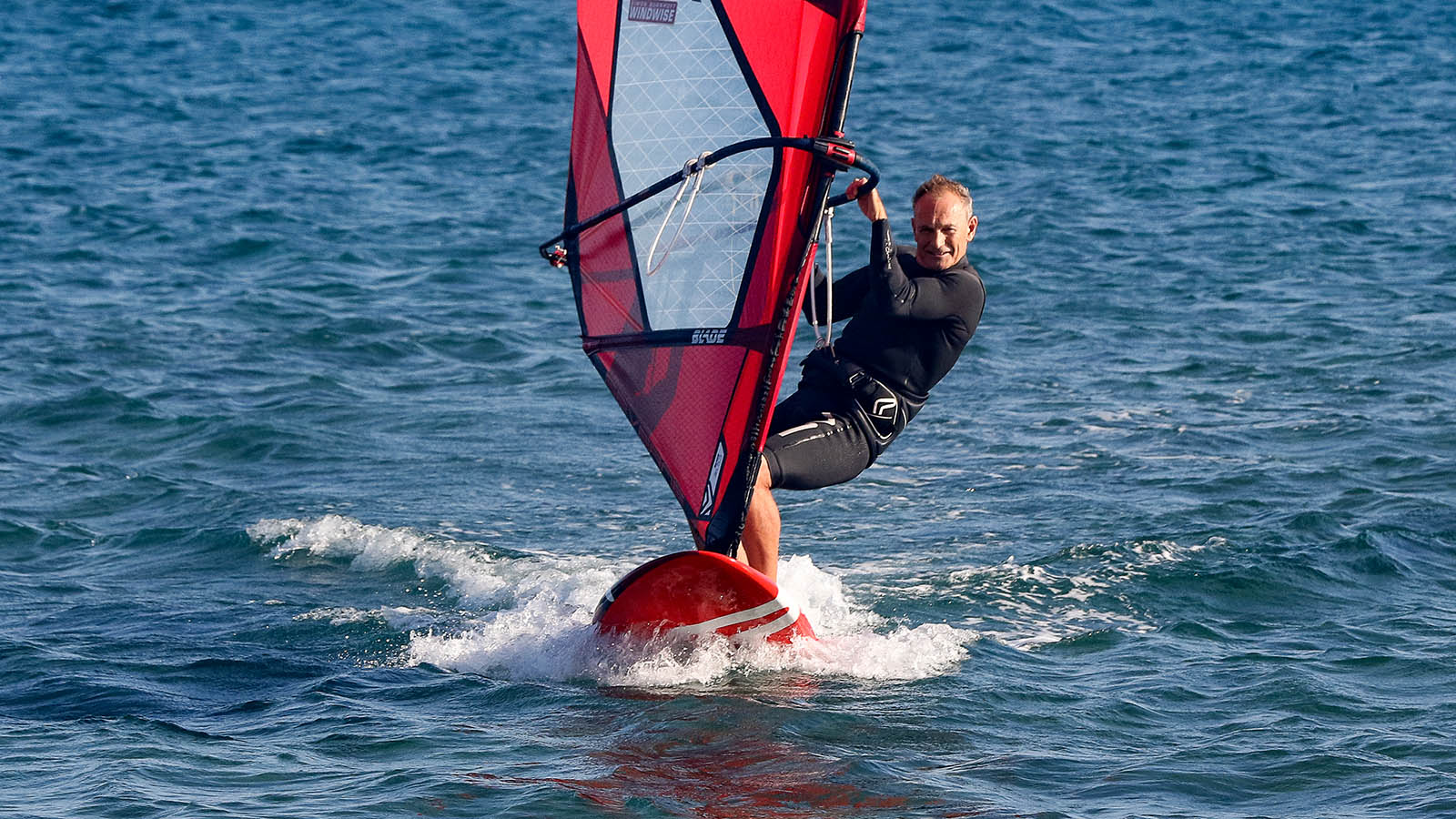
Why Does Your Board Keep Luffing?
It’s quite common to find the board “spins into wind” just sailing along or when going for the straps. Nine times out of ten, this is down to destroying that ‘7’ stance by pulling on the mast arm and flexing the front leg too much, and over weighting the rear leg.
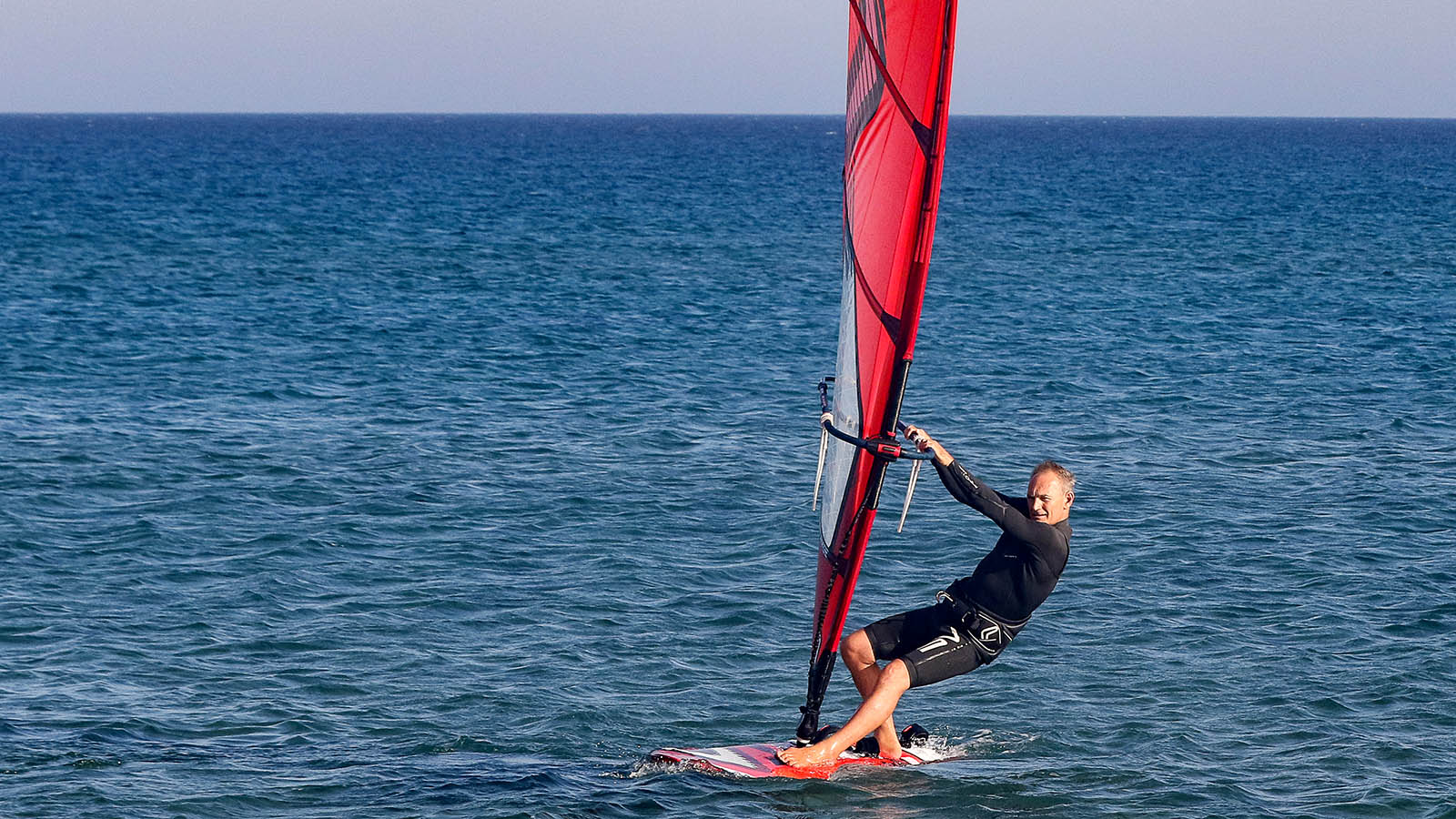
Anti Luffing
To solve this, exaggerate a ‘low hipped’ Sunken 7 stance. Drop low to push that board off the wind by extending the front leg and mast arm. Simultaneously heavily flex that back leg to scissor the board with the feet. Pulling down on the boom and twisting the rig forward will help you solve the issue even more. This can all be done in and out of the harness.
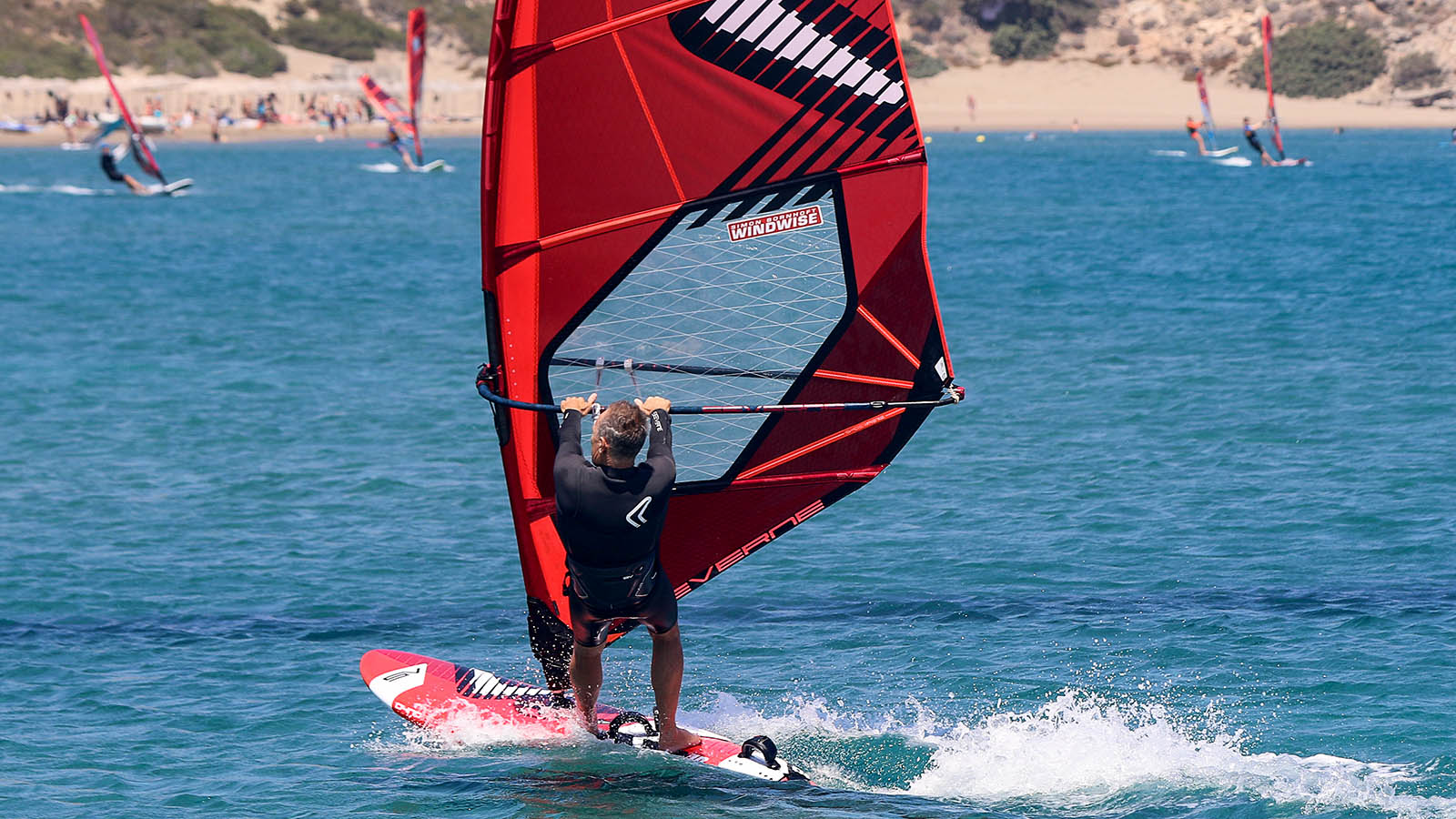
Early planing & Getting Going
Whether it’s a first time 125-160L board in marginal conditions or a sub 85L board in 25knots, ‘smaller boards’ are sometimes harder to get planing as the tail has a tendency to sink. The secret is bringing that back foot right up close to the front straps in marginal winds, then super accentuate your ‘Straight 7’ by ‘lifting and locking the torso’ trusting your harness, and push away with the mast arm and front leg.
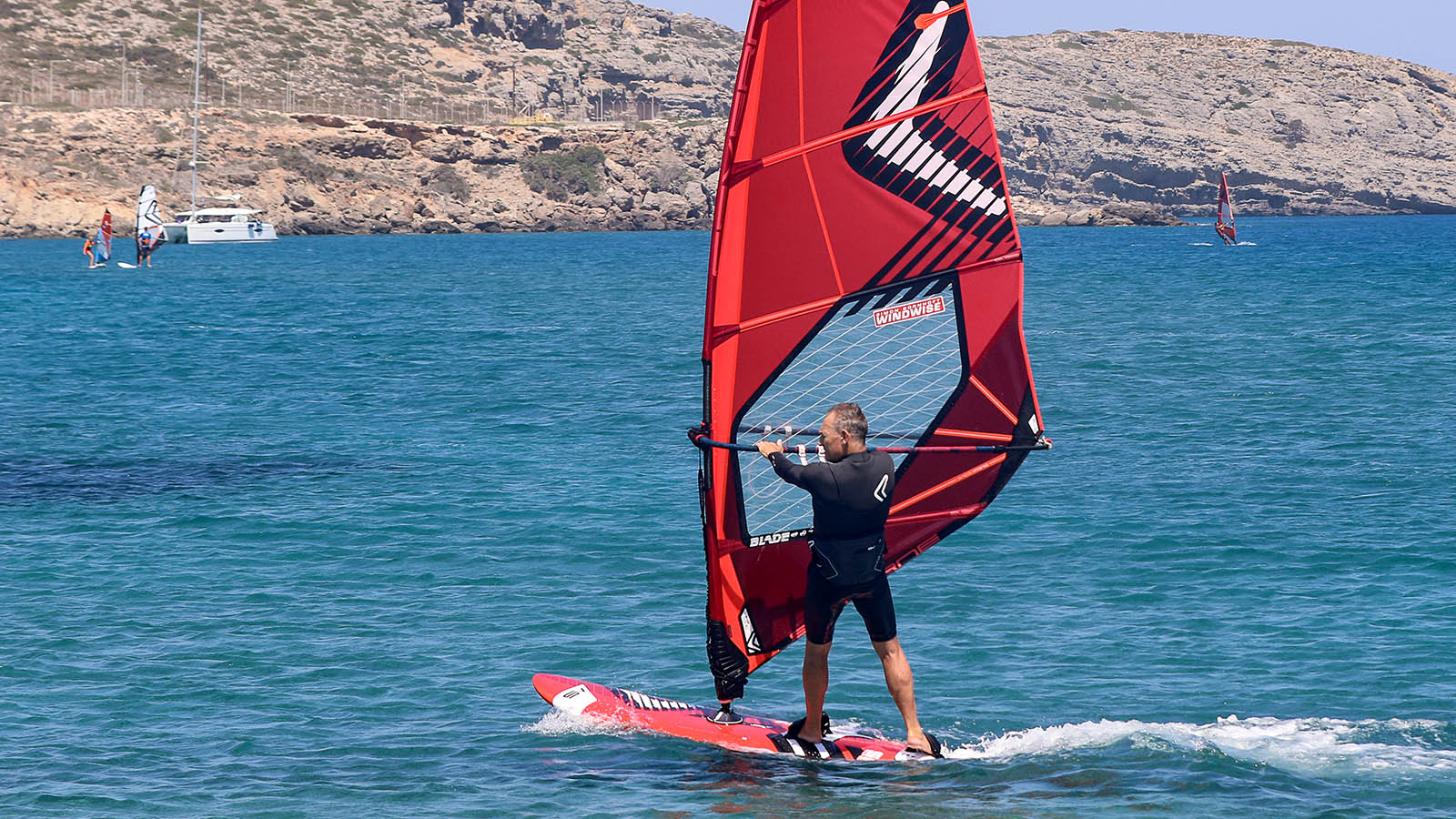
Off The Plane In The Straps
To sail off the plane in the straps, work on super extending your mast arm and drive pressure through your extended front leg to flatten the board and force the rig and body forward. The worst thing you can do is crunch up.
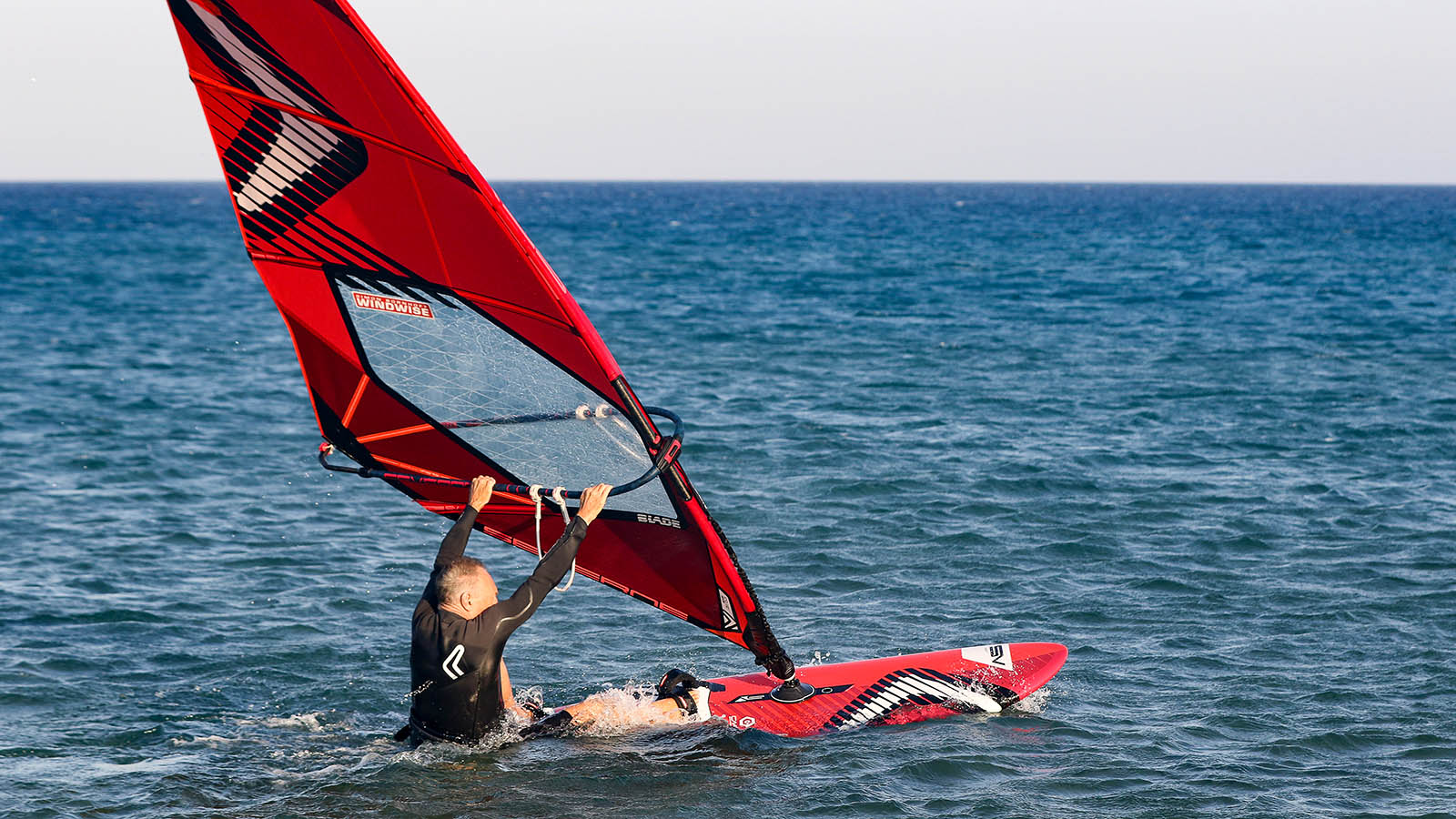
Survival Straps Waterstart
Normal protocol says harness first, front strap, and then back strap. But if you freak at the thought of moving your feet at speed, slide the back foot into the rear strap before you get planing! Keep the rig forward getting into the back strap (easier on a single back strap board). Gain some speed, hook in and then go for the front strap. If you keep the rig forward you can actually get into both straps off the plane before hooking in. Unconventional I know, but using ‘opposition’ to counterbalance your way into the straps works a treat for many windsurfers who struggle with getting into the straps on a short board.
A great exercise to practice to help you develop this skill and learn to reduce spin out, is to waterstart with both feet in the straps, as it teaches you to flex the rear leg and keep the rig forward!
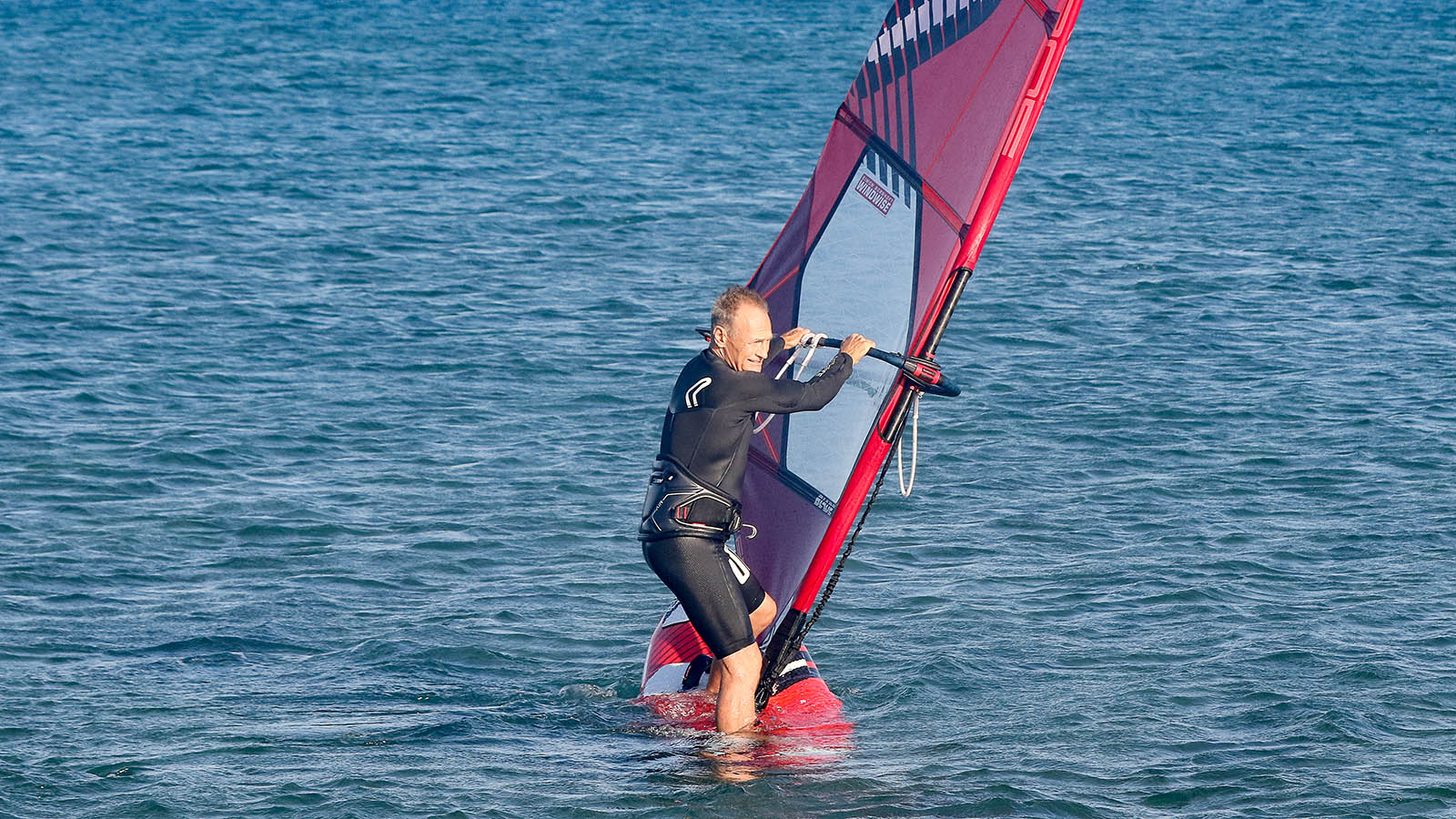
That Sinking Feeling Exercise
It’s common to stuff the nose in on smaller boards and a great way to increase confidence is to actively sink the nose and learn to recover it. Look forward and sail right into the wind. Keep the rig away from you, sheet out to de-power and dangle it massively towards the tail. Edge the feet forward and actively sink the nose. Quickly shift the feet back pop the nose back up. Try it 20 times and you’ll be amazed how you start to nail it.
Warrior Tacking For Short Boards
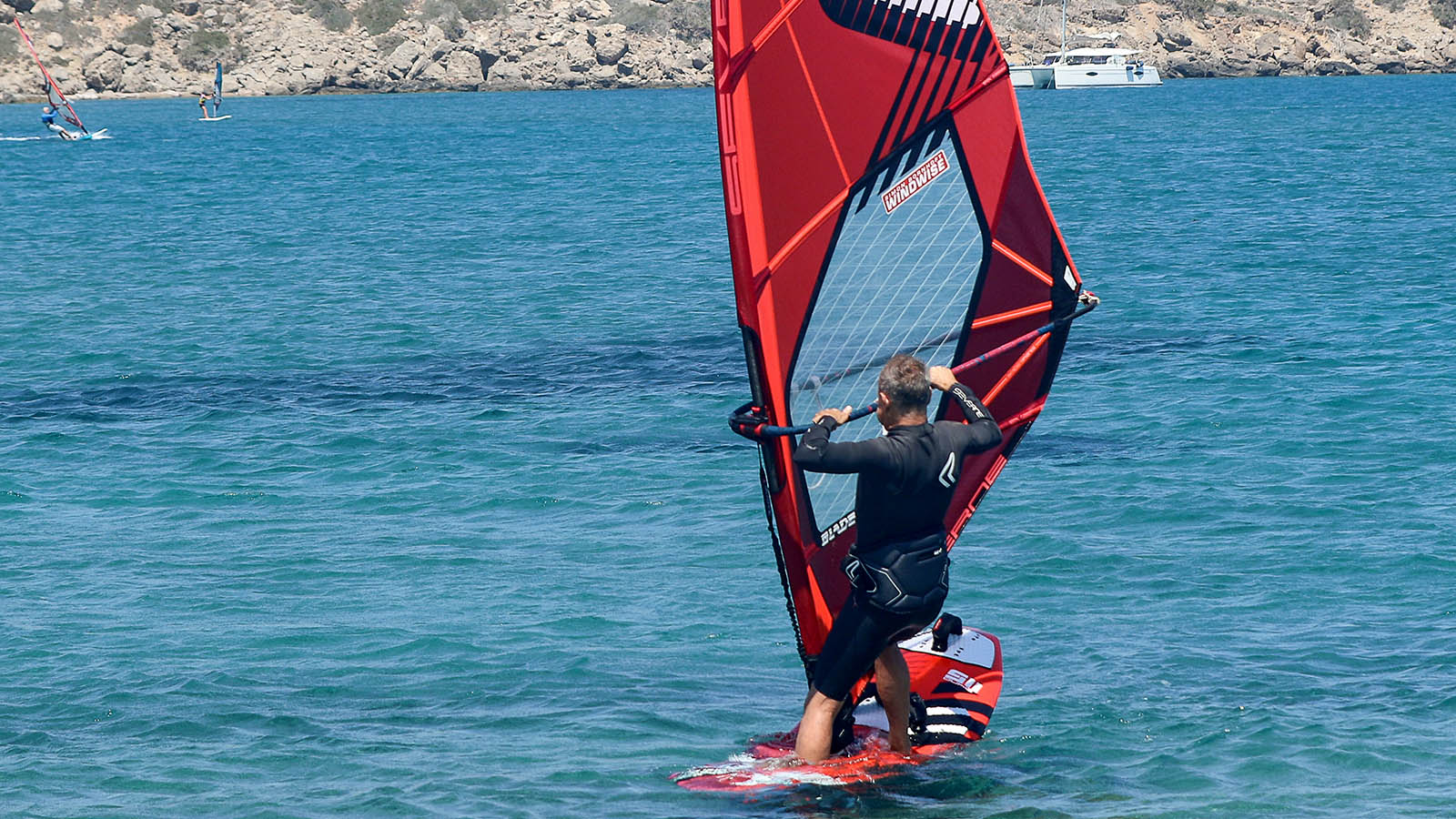
Classic Tack Dismount
We’ve covered this fully in a previous Warrior Tacking feature, but here’s a recap. Time and time again, if you bring the rig forward of the mast base on a short board, the nose goes down and you go with it!
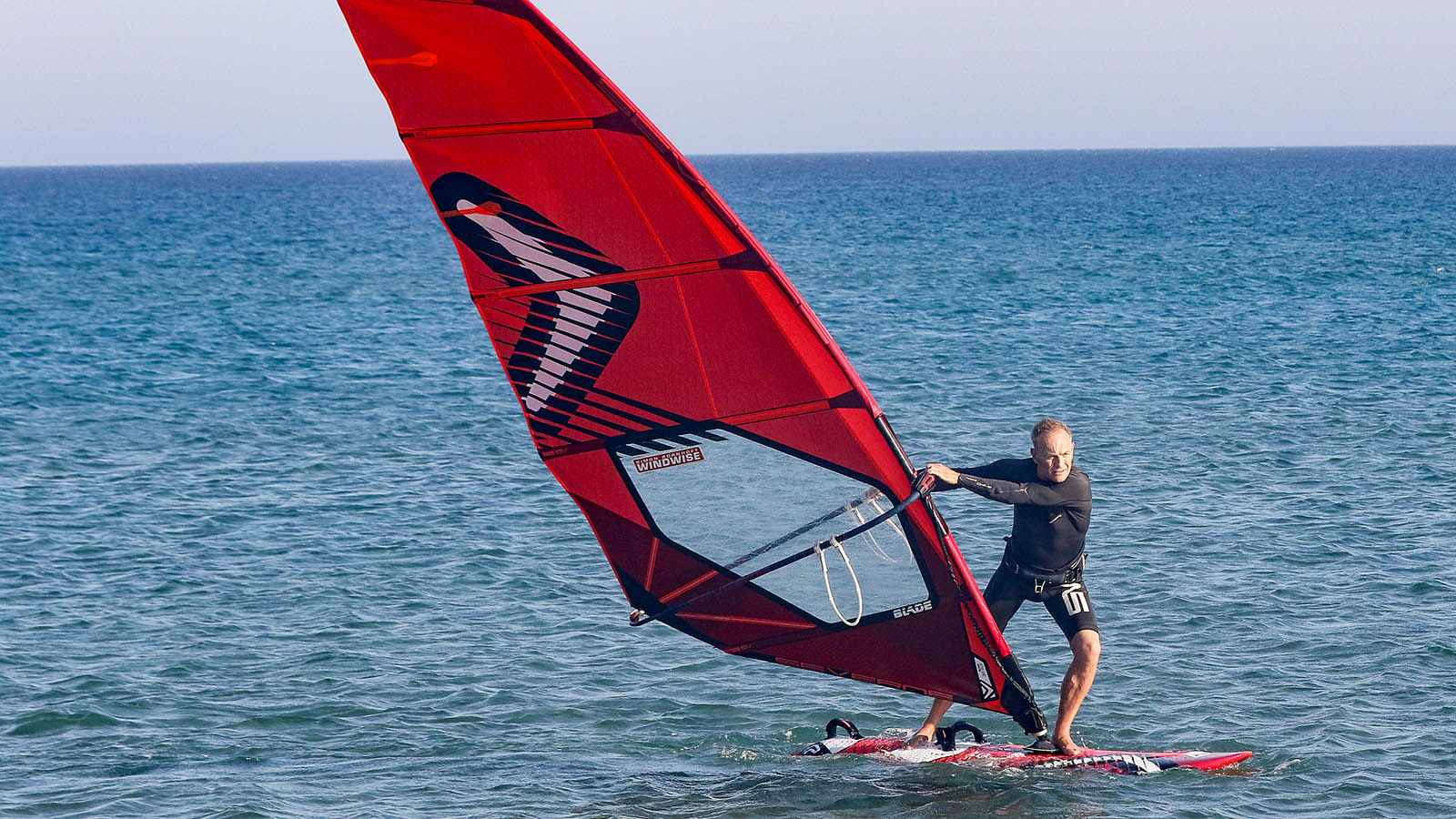
Warrior Tack Success
Think only of keeping the rig BACK throughout the tack. Adopt our Warrior stance (looking and leaning over a flexed knee – chin on shoulder looking forward) and ‘hang’ the rig behind you towards the tail. This gives you some precious time to ‘oppose’ the rig and save the tack. It goes against human instinct of wanting to pull the rig forward, but it works SO well.
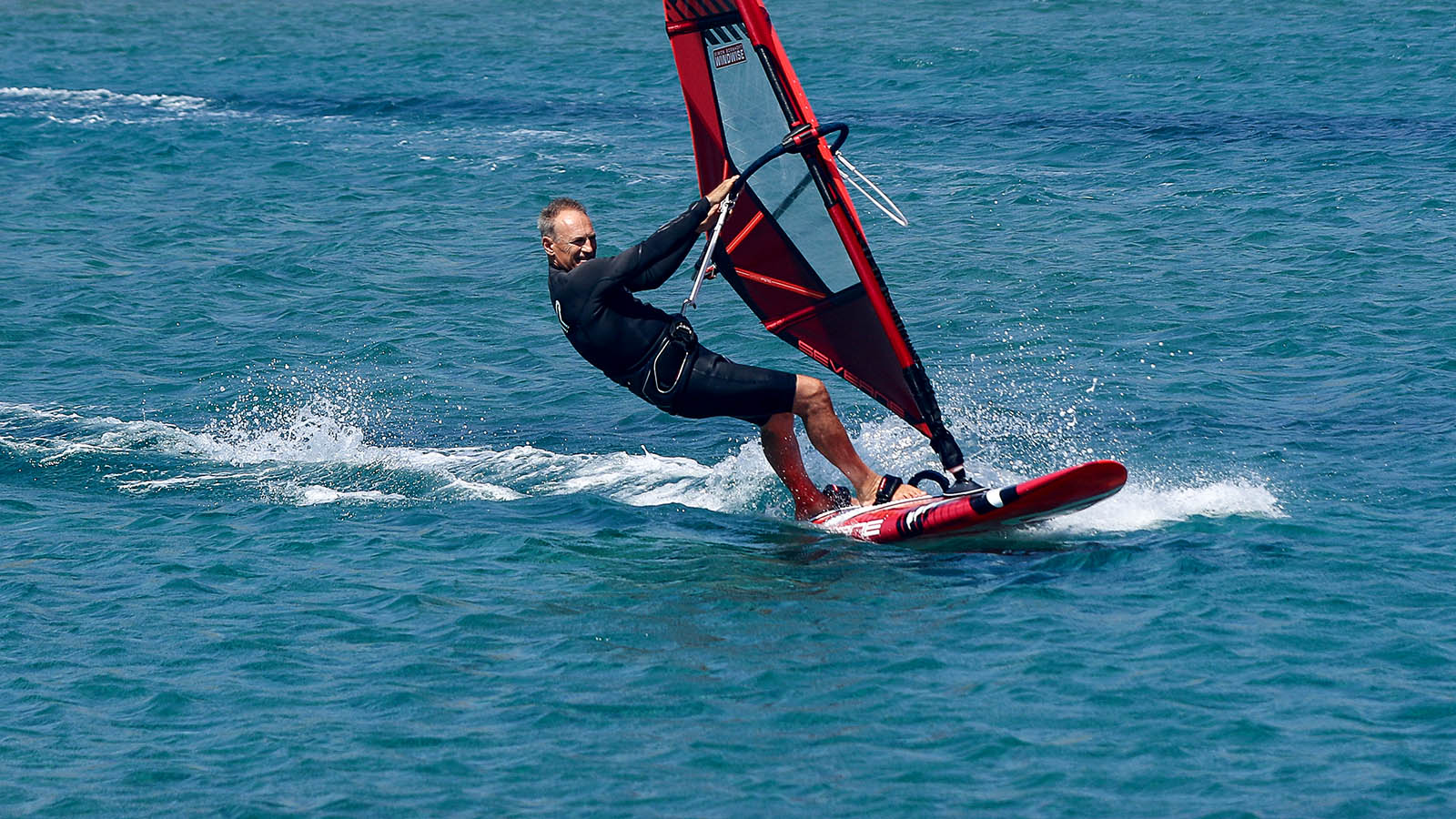
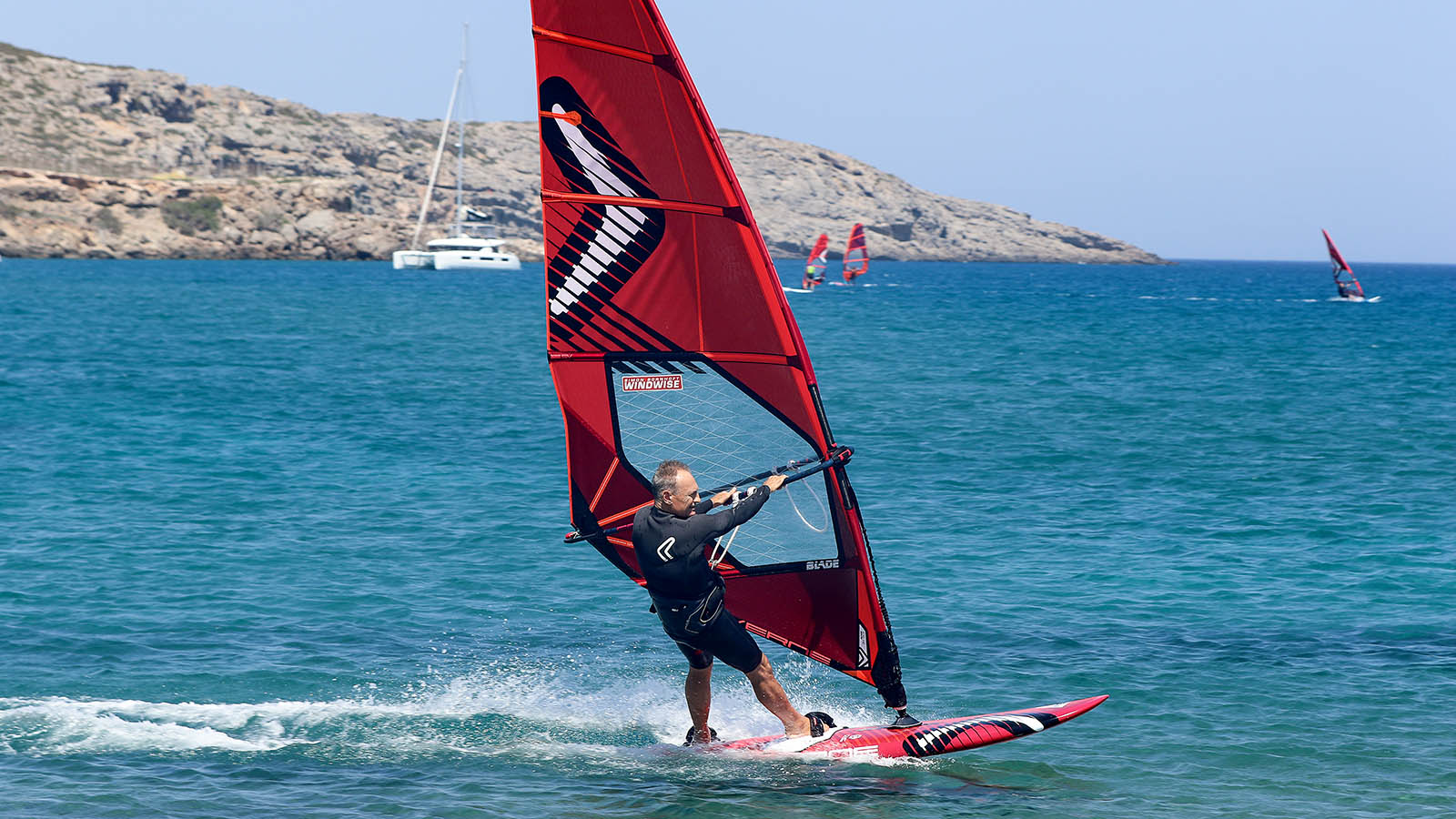
Straight 7 Accelerator
If there’s a risk of luffing and stalling, it’s important to keep the board flat and create drive. Straighten and tighten the torso and push that rig away and forward.
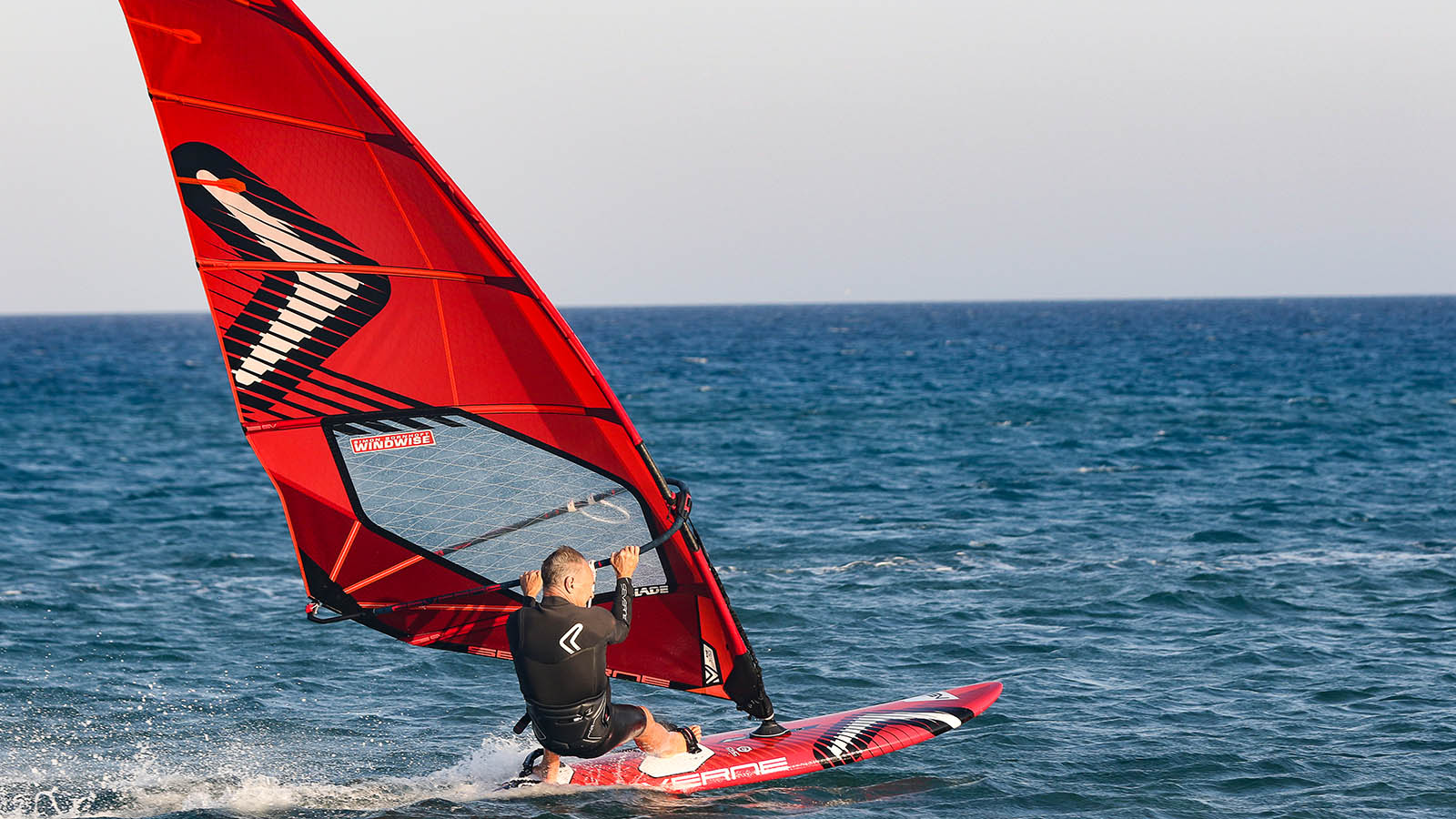
Sunken 7 Going Fast!
Feeling fast! Sink that 7 DOWN and back into the harness. Toes up, heels down and soften that rear leg and enjoy the ride!
Our next Windwise Dyno feature will show some real life learning experiences. Until then any technique questions or Severne/Dyno specific tune-ups, drop me an email info@windwise.net!
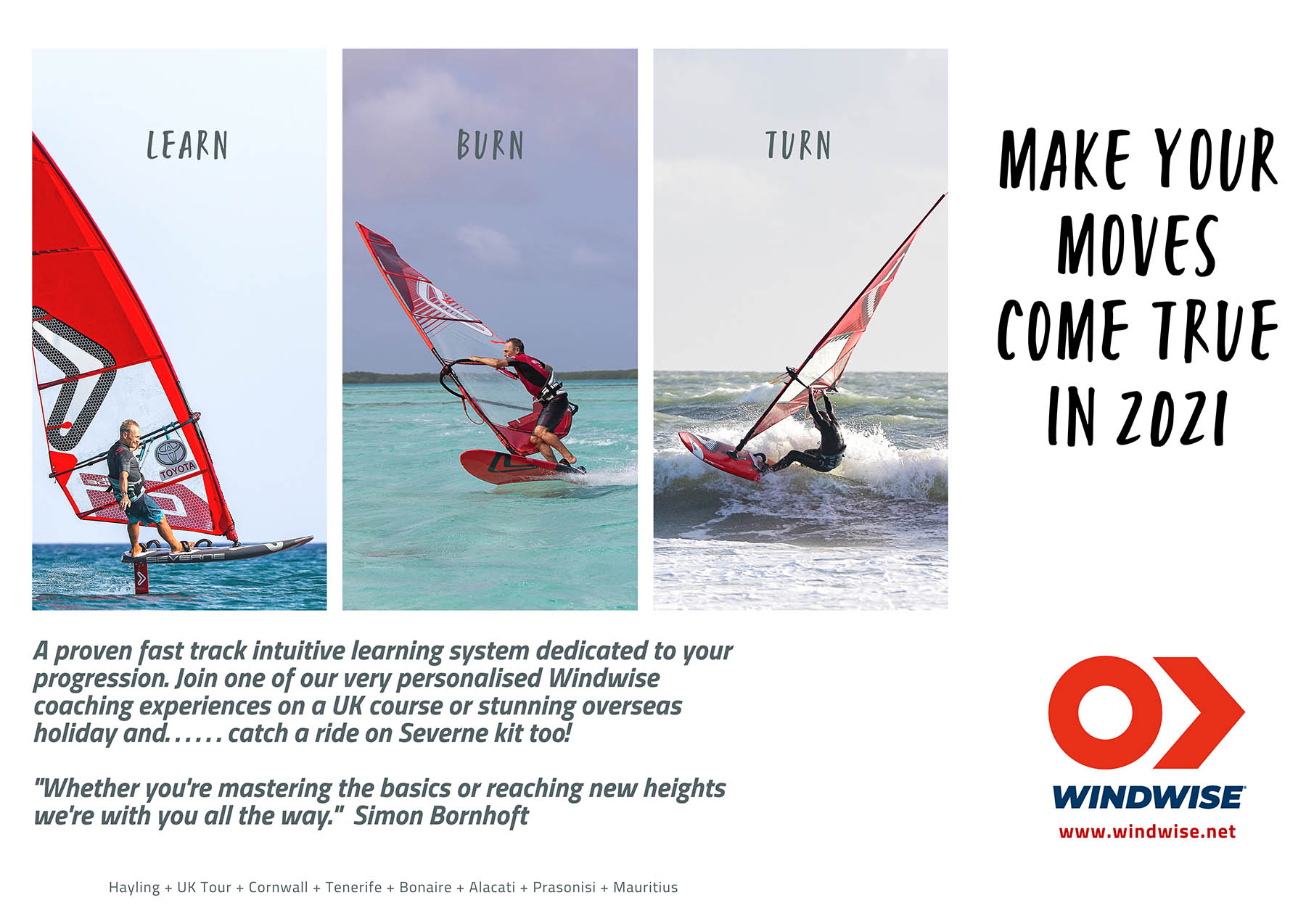
Want to improve your windsurfing and try some Severne gear?
2022 Windwise Winds Of The World Tour Dates Announced!
Freeride + Freewave + FoilWise
Tenerife / Bonaire / Alacati / Prasonisi / Mauritius
info@windwise.net
Copyright: Simon Bornhoft Windwise 2021
More Severne news
The South West Australia mission
As the 2024 Western Australian windsurfing season comes close to its twilight, Federico Infantino and fellow windsurfers chased up an epic adventure.
With the chances of scoring one final offshore day in WA, and the WSL event being held at the Margaret River main break, little doubts were left in this local crew’s minds. They had to score elsewhere.
Lina Erpenstein wins her first-ever World Cup in Chile
Severne rider rose to the top of the podium in her first-ever World Cup Victory in Chile. The women’s final consisted of no less than three Severne riders; Sol Degrieck who finished second and Pauline Katz who finished fourth.
THE ACTION IS HEATING UP IN CHILE
One of the biggest windsurf wave events in South American history kicked off on April 1st, and will run through to April 12th. The time has come for the PWA-IWT Chile World Cup, and based on the action we saw last year, we can expect to see high-quality windsurfing.
DON’T MISS THIS MASTERCLASS BY DIETER VAN DER EYKEN
After a successful first edition, Dieter van der Eyken, Rene Egli Fuerteventura, and INNSiDE by Melia, are announcing the second edition of the “Windsurfing Masterclass Fuerteventura”.
GIRLS ON TOUR
On Monday, July 10th, 2023, the second edition of ¨Girls on Tour¨ took place in Pozo Izquierdo, Gran Canaria. This esteemed event was a coaching program exclusively organized by the PWA for women, aimed at fostering their skill development.
SPECIAL WINDSURFING DAYS – EL NINO TURNS ON
Tenerife offered several closely spaced wave sailing sessions around the Christmas period in the winter months with some exceptional conditions with the arrival of the first winter swells.
A particular spot, that did not deliver a single day the previous winter, now had Severne rider Dieter Van Der Eyken as excited as a kid on Christmas day.
TOMMY FRIEDL PROCENTER
Experience laid back windsurfing in the red sea Welcome to the Tommy Friedl ProCenter, your destination for windsurfing adventures nestled in Marsa Alam, El Naaba Bay, along the stunning Red Sea in Egypt. At the heart of the action, the centre operates from the...
2024 Margaret River Wave Classic
The 2024 Margaret River Wave Classic was yet another epic event filled with non stop action from the very beginning until the end. Jaeger Stone took the mens open title and Jane Seman won the womens division.
MARGARET RIVER WAVE CLASSIC 2024
The 2024 Margaret River Wave Classic in Western Australia will happen this year from February 1st – 4th
Severne is proud to support this year’s event, and to see World class wave competition return to “margs” yet again.

